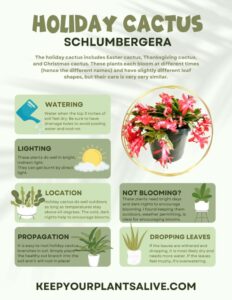Cacti, fascinating specimens of the plant kingdom, have carved out an impressive niche for themselves in gardens and homes alike. Their resilience and unique adaptations to arid environments make them appealing choices for both novice and seasoned gardeners. But the pivotal question arises: how often should you water a cactus to ensure it thrives? Finding the optimal watering schedule is crucial for the long-term health of these remarkable plants.
If you think maintaining a cactus is a walk in the park, think again. Watering may seem straightforward, yet it can pose intriguing challenges. Each species exhibits distinct traits that influence its hydration needs, making the crafting of a universal watering routine a nuanced endeavor.
Understanding the growth patterns and environmental requirements of your cactus is the foundation of establishing a successful watering regimen.
In this article, we will delve into the optimum watering schedules and practices to promote healthy, robust cacti, while also exploring the factors that impact their hydration needs.
Let’s embark on this enlightening voyage into the world of cactus care!
Evolutionary Adaptations: Nature’s Ingenious Design
Cacti are a testament to nature’s ingenuity. Evolved to thrive in the harshest conditions, these plants have adapted several intrinsic mechanisms to manage moisture efficiently. They possess thick, waxy epidermises that minimize evaporation. Additionally, their modified leaves—spines—further mitigate water loss while simultaneously deterring herbivores. Understanding these attributes is paramount when determining the watering needs of your cactus.
Cacti store water in their stems, enabling them to endure prolonged dry spells. This adaptation means they require far less frequent watering than most traditional houseplants. But how frequently is enough? The answer varies significantly depending on several variables.
Climate, Soil Composition, and Potting: The Triad of Watering Considerations
The first step in establishing an effective watering schedule is to consider the environment in which your cactus resides. Cacti living in more humid climates generally need less frequent watering than those in arid regions. Conversely, a cactus kept in a dry indoor climate will demand more regular hydration than one flourishing outdoors in its native habitat.
The type of soil used is equally vital. Cacti thrive in well-draining substrate, often a mixture of potting soil tailored for succulents, sand, and perlite. Such soil composition enables excess water to drain away, thus preventing root rot—a common affliction for over-watered cacti. If the soil retains too much moisture, the plant’s roots may suffocate, leading to severe damage.
Moreover, the potting vessel can also impact watering frequency. Terracotta pots, with their porous nature, absorb moisture and allow for better aeration. In contrast, plastic pots can retain water for extended periods, thus requiring less frequent watering. Choosing the right pot is another dynamic facet of cactus care.
The Seasonality Factor: Nature’s Rhythm
Cacti exhibit a clear pattern of growth through the seasons, which directly correlates to their watering needs. Typically, cacti enter a period of active growth during spring and summer. That’s when the sunniest days and longer photoperiods stimulate growth. During this phase, you should water your cactus more frequently, allowing the plant to absorb the moisture it requires to support new growth. A common guideline during this time is to water every two to three weeks, but always adjust based on your environmental conditions.
As autumn approaches, many cacti begin to prepare for dormancy, requiring less frequent watering. During the winter months, the plants enter a state of rest, slowing down their metabolic processes. In this phase, watering once every four to six weeks is often sufficient. Always ensure the soil dries out completely between watering sessions to suit this dormant period.
Signs of Under-Watering and Over-Watering: The Balancing Act
Recognizing the signs of distress in your cacti can be as critical as adhering to a watering schedule. Under-watered cacti may exhibit wrinkling or a generally shriveled appearance—a clear signal that more hydration is needed. Conversely, over-watered cacti present a different set of symptoms: mushy, discolored stems, often accompanied by a foul odor emanating from the roots. This stark contrast illustrates the delicate balance required in proper cactus care.
To mitigate the risk of either scenario, a moisture gauge or a simple finger test can be employed. Insert your finger into the soil; if it feels dry several inches down, it’s time to water. Conversely, if the soil feels damp, give it some time before another watering session.
Myth-Busting: Common Misconceptions about Cactus Watering
Several misconceptions have clouded the understanding of cactus care. One prevalent myth suggests that no water is required during winter—this can lead to severe dehydration. While it’s essential to reduce watering, your cactus still needs occasional moisture to survive. Another myth claims that all cacti require the same watering frequency; this oversimplification neglects the diverse species and individual preferences of these remarkable plants.
By arming yourself with knowledge and observing the unique characteristics of your cactus, you can establish an effective watering schedule, ensuring that your plant flourishes.
In conclusion, understanding the intricate relationship between your cactus and its environment is vital. By considering factors such as climate, soil, seasonality, and individual plant signals, you can master the art of watering and witness the robust beauty of your cacti as they thrive in harmony with their ecosystem. Happy gardening!





Leave a Comment